I’m constantly finding great, older jazz albums at record stores, but I don’t always have much reason, or time, to write about them. Hence, each year I pick out the best ones that moved me the most, and compile my top jazz discoveries of the year. (Here are the lists from 2009 and 2010.)
Jazz is an incredible, fertile soil, and I can’t imagine I’ll ever stop digging for new inspiration. Scattered throughout are links to the music via YouTube or mp3 blogs; I hope you’ll click around and find something you like. Better yet, hit up your local used record store. Or even better, go see some live jazz here and here!
Enjoy!


Sam Rivers – Fuchsia Swing Song
Sam Rivers died the day after Christmas, and I did what any music nerd does: pulled out the recently deceased’s music to listen to it anew. This was Rivers’ first date as a leader, and along with hearing it with the hindsight of his death, it’s a thrill to hear knowing what he accomplished afterward in the avant-garde. Here Rivers is more “in,” as if he knew he was recording for Blue Note and not ESP, and it yields his blissful masterpiece, “Beatrice.” Jaki Byard, Ron Carter and Tony Williams clutch the reins with casual care; this was 1964, and the horses had not been unleashed just yet. I found this at Groove Yard Records in Oakland, and though I was familiar with Sam Rivers, I’d owned no albums of his as a leader. Of course, once he died, I realized he was all over my record collection on albums by Dave Holland, Andrew Hill and Tony Williams. And also…
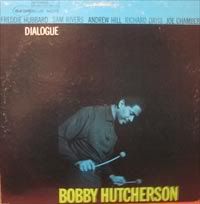

Bobby Hutcherson – Dialogue
There’s not a vibist in the world quite like Bobby Hutcherson, who straddled the inside-outside thing just as his instrument straddles percussion and tonality. This is a great band that needs no saddle, including the great Andrew Hill on piano and on drums, Joe Chambers, who in a rarity for drummers contributes two compositions. Sam Rivers shines on this album, and though Freddie Hubbard is nice on tracks like the 3/4 “Idle While,” you can hear the spectre of Rivers’ influence all over this album. Kid was from Boston, had just worked with Miles Davis. Of course they were paying attention to him. Like most albums on this list, I picked it up at the Last Record Store in Santa Rosa.
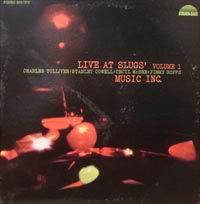

Charles Tolliver – Live at Slug’s Vol. 1
I saw Andrew Hill with a band that included Charles Tolliver at the Herbst Theatre in San Francisco, in 2006. It was a performance that has only gotten better in my memory, and if by chance Jim Bennett from KCSM’s ‘In the Moment’ comes across this post—Jim, I’d die to have a copy of the live recording. That night, Charles Tolliver was indescribably good—and I took note. I’d come across a Live in Tokyo album, but this live recording is the stuff dreams are made of—serene, thoughtful, nuanced and alive. The songs are elastic, with implied rhythm. Here’s the group with Stanley Cowell a year after this album was recorded; “Orientale” apparently gained fire over the course of 12 months. (Groove Yard)
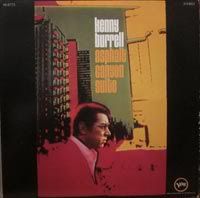

Kenny Burrell – Asphalt Canyon Suite
Why this 1969 record isn’t heralded as Burrell’s masterpiece is a mystery. Side One is a suite of instantly gripping thematic jazz, airy and moody, which can stand up against the best modal / atmospheric releases of all time. Even stranger, the record was produced by Johnny Pate, who worked with the Impressions and B.B. King, and scored Shaft in Africa. You’d think he’d force a more upbeat hand here, but check out “Alone in the City” and stroke those chinhairs. Unfortunately the rest isn’t on YouTube, and the album isn’t in print. Burrell never played like this before, and never did afterward; if you ever come across this LP, snatch it up. (Last Record Store)
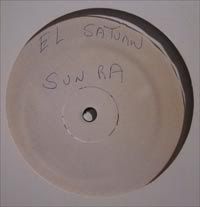

Sun Ra – On Jupiter
Sun Ra and his Arkestra, with their El Saturn label, were indie pioneers: they’d order small-run pressings of their lo-fi records, hand-write song titles on the blank labels, and decorate the album jackets themselves, on the bus, driving to the next show. This was in the 1960s, though—not the aughts. If you ever see one of these handmade Sun Ra LPs, you’re looking at something very rare, so pick it up while you have the chance. I found this while on a lull in my Sun Ra listening, and my obsession subsequently resurged. “Even the disco song is good” is not something I ever expected to say about a Sun Ra record, but this was recorded the same year as his terrific Lanquidity, and there was something in the air. (Groove Yard)
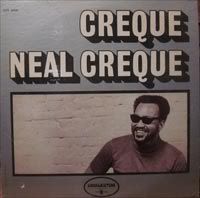

Neal Creque – Creque
This record is the reason I received a text message this year reading “I just shit my pants.” Any hip-hop head knows this cover design from People Under the Stairs, and when I found it I couldn’t help but send a photo to my friend Matt. I expected drumbreaks galore—especially since Billy Butler is on guitar—but instead got some completely stunning compositions like “Years of Regret” and “Cease the Bombing.” If you only hear one song off this LP, make it “Rafiki,” and let the bassline carry you through the rest of the day. Scored this along with a ton of great cassettes at Vinyl Planet in Petaluma. Thanks, Phil.
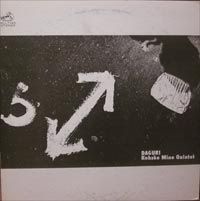

Kohske Mine Quintet – Daguri
What is known about Kosuke Mine? Not much, if you ask me. I came across his debut album on Three Blind Mice a few years ago in a revelatory batch of Japanese jazz LPs, and loved it to pieces, but never saw anything else. There’s so much invention on this album that I think I could listen to it 20 times and never fully comprehend it. There are liner notes in Japanese. If anyone knows Japanese and wants to translate them for me, and unlock the mystery of Kohske Mine, a.k.a. Kosuke Mine, I’d be much obliged. (Here he is in 2010 playing very straight, with the same drummer from this 1973 date, Hiroshi Murakami.) Another Groove Yard find.
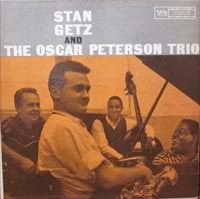

Stan Getz – and the Oscar Peterson Trio
Sometimes gold just sits under your nose for half a lifetime and you never recognize it. Though I’m not inclined to avoid Verve, like other jazz fans I know, their releases tend to have a bit of a pedestrian, razzle-dreadful “hey, look, this is jazz!” element. The interplay on this date is phenomenal, and if it’s showy then who cares—I can’t believe the sense of fun and elation on every single track. (Here’s “I Want to Be Happy“). Oscar Peterson and Stan Getz had great mainstream success separately, and pairing them together at just the right time in their careers was a serendipitous idea that yielded a perfect jazz record. (Last Record Store)
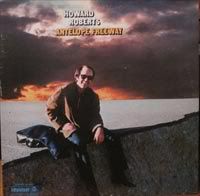

Howard Roberts – Antelope Freeway
What in the hell was Howard Roberts thinking? An in-demand Los Angeles session player, Roberts had recorded some grit-and-sweat jazz sides (H.R. is a Dirty Guitar Player) and some standard mainstream offerings (Whatever’s Fair!) for Capitol Records, but nothing that comes remotely close to this. Antelope Freeway is a psychedelic melange of sound effects, grungy music and spoken-word, and likely had even the hip execs at Impulse Records scratching their heads. The Beatles’ “Revolution #9” opened a lot of doors in music, many leading to nowhere, but deep tracks like “That’s America Fer Ya” and “Five Gallons of Astral Flash Could Keep You Awake for Thirteen Weeks” show that this one’s worth its weight in weirdness. (Last Record Store)
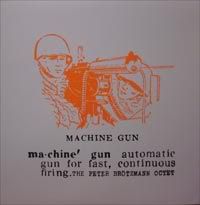

Peter Brotzmann Octet – Machine Gun
Lord almighty, if ever an album lived up to its name, this is it. Recorded in 1968, Machine Gun sounds like… well, a machine gun, firing rapidly and without pause. Eight Germans, 1968, under the influence of who knows what. I’ve been looking for this for years, and finally the label Slowboy reissued it this year, with an incredible thick sleeve and three-color silkscreen cover. Brotzmann is capable of making the most irritating music of all time, and the way the rest of the band takes his lead here on the title track is like a roller coaster tippling sideways on the rails. Ordered online from the label.


Connie Russell – Don’t Smoke In Bed
Admittedly, I bought it for the cover. But Russell is a nice, husky singer, and this is a very nice set of unaffected jazz singing; mp3 access here. “Lonely Town,” “Prelude to a Kiss,” “Angel Eyes,” “You’re My Thrill” and plenty more here make it a good listen on the late-night. Most people reading this who have once smoked in bed now don’t, so take a minute to remember how nice it was. (Online)
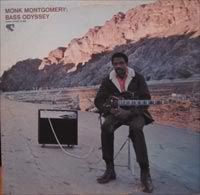

Monk Montgomery – Bass Odyssey
“Hey, let’s just go out in the desert and take the photo. I’ll bring my amp. Who cares if the sun’s going down.” Monk Montgomery was one of the Montgomery Brothers, and recording an album as a leader, as an electric jazz bassist, was unheard of back then. This is on Chiasa Records, a label owned by Hugh Masekela, and Masekela obviously gave his artists a lot of freedom. There’s some really fun, effects-laden largesse going on in the grooves of this supremely gloppy album. Here’s “Foxy Gypsy,” and “Fuselage.” Traded off of Matt the Friendly DJ.
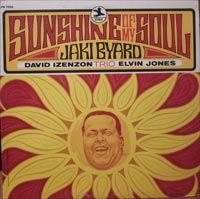

Jaki Byard – Sunshine of My Soul
What a terrible record cover. Just look at it. A charcoal drawing of Jaki Byard, with a face contorted as if he’s on the toilet, inside a sunflower. Ironically, this is one of my favorite Jaki Byard records ever. I’ll let the handwritten ballpoint notes on the back cover from the previous owner speak for me: “‘Sunshine’ – far out but real gd; ‘Cast Away’ – far out & ok, slow; ‘Chandra’ – good!; ‘St. Louis Blues’ – weird but ok/gd; ‘Diane’s Melody’ – strange intro, rest nice; ‘Trendsition Zildjian‘ – far far out!” (Groove Yard)
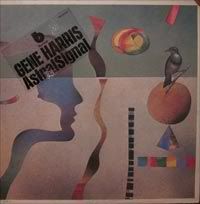

Gene Harris – AstralSignal
Forget everything you know about Gene Harris, leader of the Three Sounds. In 1975, Harris went on some serious mind exploration and came up with a psychedelic conception of jazz that’s a blast to experience. It starts with a reverb-heavy prelude that sounds like a piano being dragged by a Mack truck, and then the declaration: “WELCOME. I AM EUGENE, WIZARD OF THE UNIVERSE. COME WITH ME TO OUR UNIVERSE OF LOVE, BEAUTY, AND OTHER FUNKY THINGS. IT’S TIME TO FEEL THE MAGIC.” You want to pick only one song? “Losalamitoslatinfunklovesong“—enjoy. (Last Record Store)
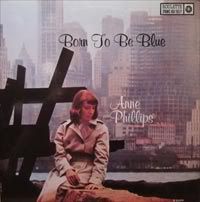

Anne Phillips – Born to Be Blue
When I hear this record I can’t help but think of soldiers overseas being sent music from back home in America. There were plenty of “Lonely Girl”-style LPs released in the late 50s, when we weren’t in a major war, but the idea is there. This was 1959, a banner year for jazz and jazz vocals, and it captures something special. Here’s the title track. (Last Record Store)
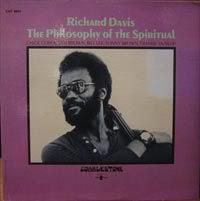

Richard Davis – The Philosophy of the Spiritual
It’s really hard to record jazz cello. Oscar Pettiford did it, and also Ray Brown (but then, Ray Brown could do anything). It’s even harder to bow an arco bass with high notes to sound like a cello. The great Richard Davis has an enormous discography and now teaches a classical approach, but when this record was recorded I’m not sure he was adroit at mimicking the higher register of a cello on his bowed bass. Nonetheless, there’s a Gunther Schuller-like atmosphere here that I love, and the compositions here are really cool—most of them are by Bill Lee, Spike Lee’s father. Bears repeated listens. (Last Record Store)
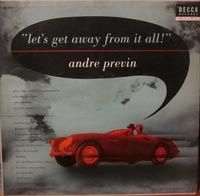

Andre Previn – Let’s Get Away From it All
Bouncy, fun piano that always reminds me of Mister Rogers’ Neighborhood. Previn’s My Fair Lady album with Shelly Manne is the classic, and Andre Previn Plays Gershwin is another early highpoint, but it’s hard to go wrong with the collection of songs here. Nothing groundbreaking, just good, compact tunes. (Last Record Store)


Saracho – En Medio
At first glance I assumed this would be like that Luis Gasca record on Blue Thumb you see pretty often at Bay Area record shops—Latin-tinged jazz-rock. But instead, this is a Pharaoh Sanders-esque outing by a bunch of L.A. musicians, led by Gary Saracho, about whom not much is known. He plays some incredible electric piano, though, and Lawrence Higgins has some nice ideas on the sax. The arrangements are schizophrenic, jumping from one section to the next, like on “Sunday’s Church.” A dense bit of unknown history. (Last Record Store)
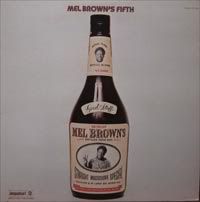

Mel Brown – Mel Brown’s Fifth
Mel brown is a guitarist who played with the great Bobby “Blue” Bland, and whose very blues-based debut album on Impulse, Chicken Fat, gets all the acclaim. That’s very misguided, as Mel Brown’s Fifth is so clearly the superior, down-and-dirty title. Just listen to the first track, “Time for a Change”. That‘s the way an album should kick off! “Good Stuff” follows, and if you think you’re in a sample paradise, you’re not wrong. Poor Righteous Teachers, Spice 1 and the Pharcyde all sampled this album. A beast. Thanks to Phil Jiggins for this one.
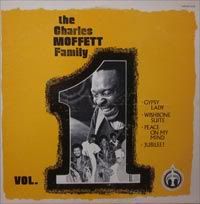

The Charles Moffett Family – Vol. 1
The first time I saw Charnett Moffett, he was playing with McCoy Tyner, Pharaoh Sanders, Ravi Coltrane and Eric Harland at Yoshi’s in Oakland in 2004. It was truly one of the most unforgettable shows of my life, and I especially remember Moffett—leaning his bass back low, attacking the strings, bowing vigorously and playing perfectly off of Harland. Imagine my surprise when years later I found this LP, a private pressing of ‘The Charles Moffett Family,’ featuring an eight-year-old Charnett on trumpet and bass. He obviously came from a rich musical family; this record is far, far better than I imagined it’d be, and sounds like it could have been released on Strata-East, no problem. Found at Fatty’s Threads in Santa Rosa.
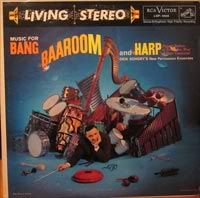

Dick Schory’s New Percussion Ensemble – Music for Bang Baaroom and Harp
Sure, it’s pre-written, and I doubt any of it is improvised in the jazz idiom, but this is no regular orchestral music. It was recorded in 1958 in a giant concert hall, and there are a TON of drums. “Biggest Battery of Percussion West of Cape Canaveral,” it says. They even use a manifold from a 1946 Chevrolet as a percussion instrument. No joke. There’s some technical data in the notes, about using an Ampex three-track and as few Telefunken microphones as possible “rather than the easy but treacherous add-another-mike-for-what-you-don’t-hear approach,” and they thank the “man who kept pumping coffee into us for the two days we didn’t see daylight.” A real hoot. (Vinyl Planet)
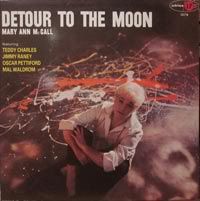

Mary Ann McCall – Detour to the Moon
She got it, Mary Ann McCall did—the idea of selling an idea in a song and really conveying something instead of just singing words. Jubilee Records got the idea of selling records as well as ideas, and so came up with the gimmick of an album full of songs about the moon—”I Wished on the Moon,” “Moonglow,” “Moonlight Becomes You,” “No Moon at All,” etc. The idea inspired Verve to release Mel Tormé’s forgettable Swingin’ on the Moon two years later, but unlike that dull outing, Detour to the Moon is fantastic. Mary Ann McCall only released one LP after this, and her career fizzled; she went on to pour drinks at a dive nude-dancing bar in Hollywood in the 1970s. They say she had addiction problems, and before she died she was relegated to singing in the airport lounge at LAX. Crazy. (Last Record Store)
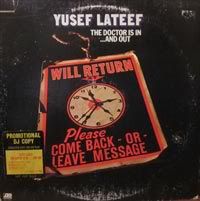

Yusef Lateef – The Doctor is In… And Out
If you get overwhelmed by his large output and can’t commit to either the early Prestige years or the later Impulse years, how about this what-the-hell hodgepodge of funk-inspired zaniness? You’ll get standard ’70s stuff like “Mushmouth,” exotic flute vehicles like “The Improvisers,” and a synthesized sound collage in the form of “Technological Homosapien.” Strangely, the album ends with a sampled barbershop quartet recording of “In a Little Spanish Town“; Lateef solos between phrases, as if playing along to a 78 in his living room. It’s kind of cool. (Last Record Store)
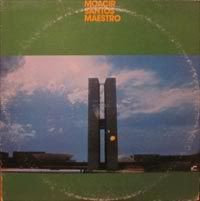

Moacir Santos – Maestro
Santos was a bona fide legend in Brazil when Blue Note signed him, yet a total unknown in the U.S., so of course he had to open his American debut with his most famous composition,”Nana.” He even preceded it by personally introducing himself in the track’s opening vamp. You won’t find simple “Girl From Ipanema” bossa nova here; the music is complex, yet distinctly Brazilian. Exhibit A: “Kermis.” (Last Record Store)
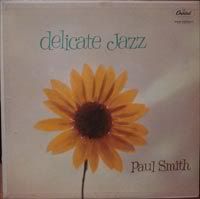

Paul Smith – Delicate Jazz
Paul Smith’s other dates seem to pay tribute to Tatum, demonstrating dizzying technique and fancy flourishes. Delicate Jazz is on Capitol Records, is borderline Champagne background music, and yet I keep playing it over and over. There’s nothing wrong with some simple calming trio stuff from a guy with a very plain Anglo-Saxon name. Found in the dollar bin at Amoeba SF.
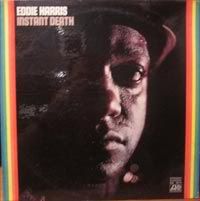

Eddie Harris – Instant Death
A dramatic cover photo, but the music isn’t somber or moody. Ronald Muldrow is great on “Little Wes,” and the title track is pretty nuts. You’ll recognize a Digable Planets sample from “Superfluous” that was used on “What Cool Breezes Do,” from Reachin‘. Probably my favorite Eddie Harris record, even though this is definitely my favorite Eddie Harris cover art—and title. A good one for the New Year’s Resolutioners out there. (Last Record Store)
TRENDING:
.Top 25 Jazz Discoveries of 2011













Hey check out (and like) an awesome video interview with the talented musician Ron Carter at: http://culturecatch.com/vidcast/ron-carter